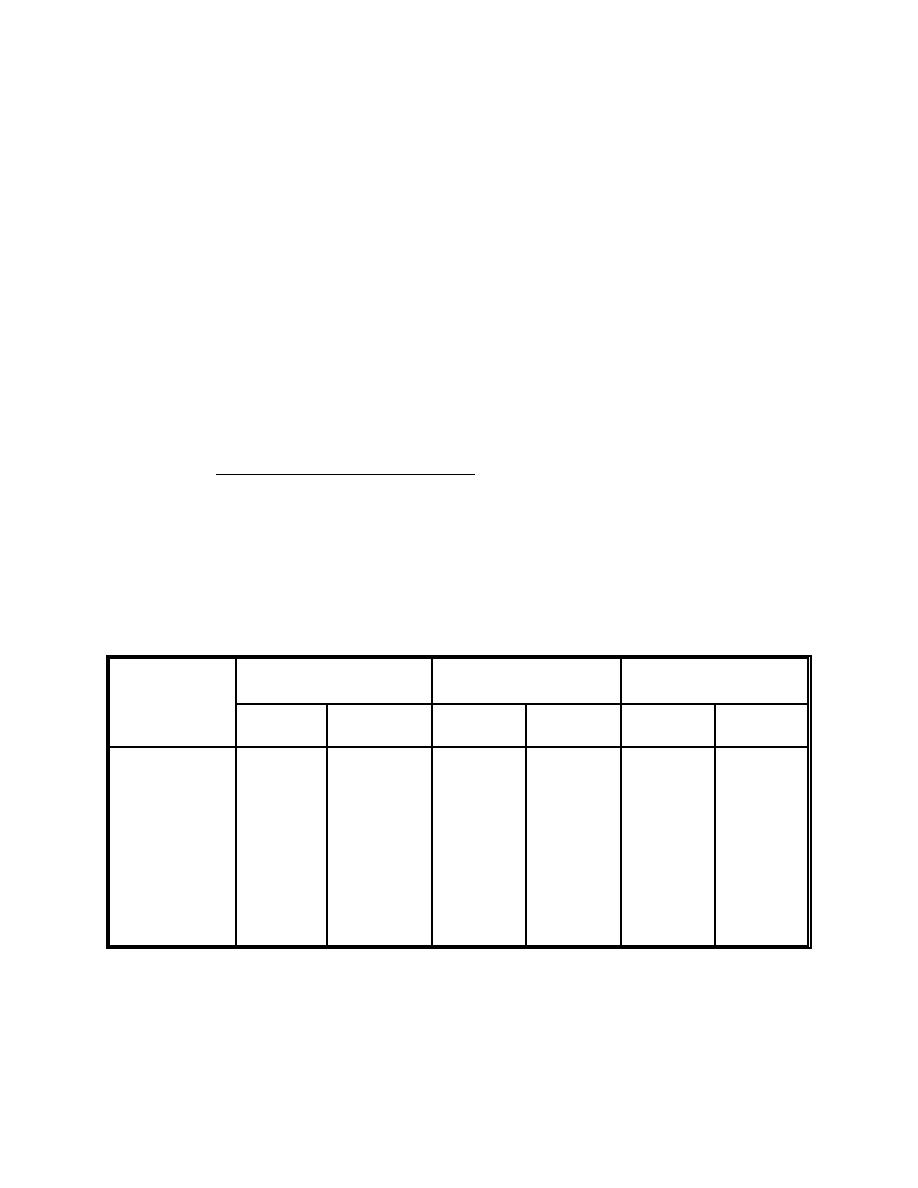
MIL-HDBK-1005/9A
a) Indirect discharge levels for conventional
pollutants will usually be higher and easier to satisfy than
levels for direct discharge.
b) Indirect discharge levels for toxic substances may
be greater than or equal to those for direct discharge depending
on the POTW sewer ordinance.
Contact local officials for sewer use ordinances and
EPA categorical discharge standards to determine applicable
industrial category and discharge limits. These limits will
establish the industrial treatment or pretreatment requirements
prior to direct or indirect discharge, respectively.
2.2.3.3
Pretreatment Regulations. Pretreatment standards for
concentrations of pollutants that may be discharged to a POTW by
industrial users are established by the EPA (Title 40 CFR, Part
403.6). Existing categorized pretreatment standards for the
electroplating (40 CFR Part 413) and metal machinery category
(40 CFR Part 433) are summarized in Table 1.
Table 1
Selected Categorical Pretreatment Standards
Electroplating1
Metal Finishing2
Pollutant
Metal Prod. &
Machinery3
Max. Day
4-Day Avg
Max. Day
Mo. Avg
Max. Day
Mo. Avg
(ppm)
(ppm)
(ppm)
(ppm)
(ppm)
(ppm)
Aluminum
-
-
-
-
1.4
1.0
1.2
0.7
0.69
0.26
0.7
0.3
Cadmium
7.0
4.0
2.77
1.71
0.3
0.2
4.5
2.7
3.38
2.07
1.3
0.6
Copper
1.9
1.0
1.2
0.65
0.03
0.02
Cyanide
-
-
-
-
2.4
1.3
Iron
0.6
0.4
0.69
0.43
-
-
Lead
Nickel
4.1
2.6
3.98
2.38
1.1
0.5
1.2
0.7
0.43
0.24
-
-
Silver
10.5
6.8
2.61
1.48
0.8
0.4
Zinc
-
-
52
26
73
36
Oil & Grease
1
40 CFR Part 413
2
40 CFR Part 433
3
Federal Register Proposed Rule (60 FR 28209), May 30, 1995
11


 Previous Page
Previous Page
